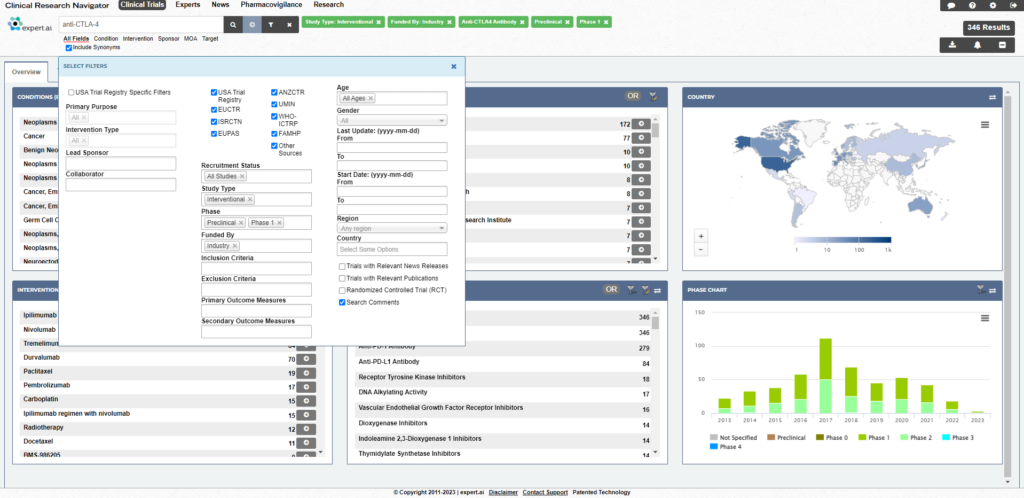As the amount of medical information related to COVID-19 and other health threats grows daily, decision-making cycles to drive research and development must be accelerated. Artificial Intelligence can help biomedical researchers monitor trends, anticipate threats and track key experts as they advance knowledge about diagnosis, treatment and prevention.
During analysis, research teams must be able to distill the most accurate, up-to-date information by disambiguating across mountains of content from diverse sources that may be repetitive, dated or false. This is especially important in light of escalating costs of subscription monitoring services that end up distracting, rather than empowering, research teams.
The expert.ai Platform for Life Sciences provides researchers with access to continuously updated global biomedical content alongside powerful AI-based semantic analysis in a single user interface.
Use Scientific Publication Insights & Analysis for:
Expert Identification
Stay up to date on leading experts in your field of inquiry. It lets you go beyond your network and presents measurable expertise metrics so you can identify both established leaders and rising stars. The current expert repository includes more than 12 million key opinion leaders and is updated daily.
Pharmacovigilance
Analyze safety signals contained within reported adverse events by identifying multifaceted relationships. Accelerate your search using summary views and detailed views with the case profile.
Clinical Trials
Visualize completed and ongoing clinical trials filtered by any combination of indication, drug, mechanism of action, sponsor or geography. Not only can users find related trials, they can also access related publications, news, study results and principal investigators in one place.
Analyze Trends
Constantly scans the landscape for the latest scientific and biopharma news, including: drug approvals, trials, conferences and more. Alerts ensure users get instant updates for their topics of interest.

How Scientific Publication Insights & Analytics Works
Spend less time searching across different sources and benefits from expert.ai’s years of AI-based text analytics experience with a special focus on associating similar content, linking concepts, de-duplicating information and semantically enriching and revealing hidden connections across various sources in a centralized platform.
Data inputs include: